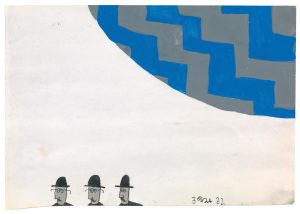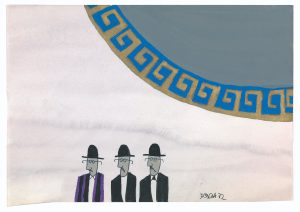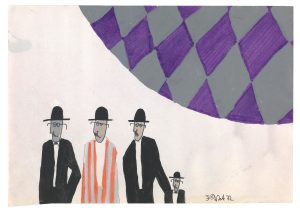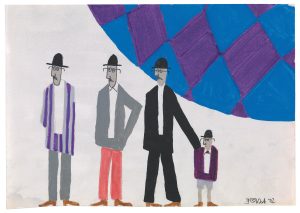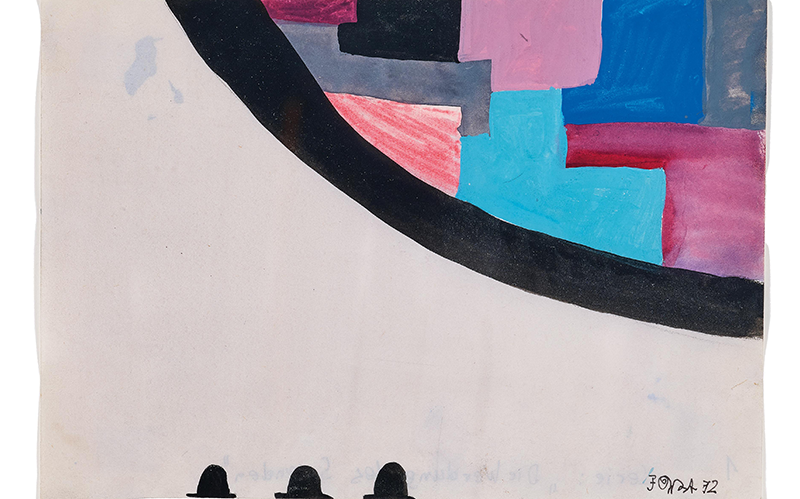
Franz West stands out as one of Austria’s most influential and distinctive postmodern artists. His singular oeuvre has long since established him as a key figure in the history of contemporary art.
The artist’s output, characterised by experimentation with materials and media, is vast in scope, spanning sculpture, installation, furniture, works on paper, video, and performance.
Franz West (1947–2012) was still a teenager when he first encountered the avant-garde art of the period and began his own artistic practice in the early 1970s. He later described Hermann Nitsch’s Actions as traumatic experiences. At the age of 30, West began studying at the Academy of Fine Arts under Bruno Gironcoli.
His first exhibition at Galerie Hamburger in Vienna was followed by numerous others. In 1993 he represented Austria at the Venice Biennale, and in 1987 and 1992 he took part in documenta in Kassel. In 2011 Franz West was awarded the prestigious Golden Lion for his life’s work at the Venice Biennale. His artwork is housed in numerous international museums and he was recently honoured with retrospectives at Centre Pompidou in Paris and the Tate in London.
ENIGMATIC
Franz West’s art was nothing short of revolutionary, multifaceted, and enigmatic. It carried a critical edge and, at times, a hint of lasciviousness, all infused with a generous dose of wit. With his work, West defied the authorities of his era, showing an almost allergic aversion to art conventions and resisting attempts at appropriation. He regarded art theory as a form of destruction. West was shaped by the Viennese art scene and its blending of linguistic philosophy with aspects of everyday culture.
His creative process was deeply influenced by his exploration of experimental literature and engagement with philosophy and psychoanalysis. He immersed himself in the works of luminaries like Wittgenstein, Freud, Hegel, and Lacan. The artist spoke of philosophy as the “input” and art as the “output”. He also nurtured a passion for emerging music genres such as techno. He enjoyed close ties with figures like the Austrian actor, writer and cabaret performer Helmut Qualtinger and Joe Berger, also an actor and artist. West described his older half-brother, the actor and poet Otto Kobalek, as his Lebensmensch – the person he considered most important in his life.
West took an ironic approach to human physiognomy from the very beginning. His five-part, successive series Die Werdung des Seienden (The Becoming of the Existent) dates from 1972. Already typical for the artist at that time: the cool character of these gouaches, the mask-like and impersonal quality of the faces – formal and substantive characteristics that can also be found in later works.
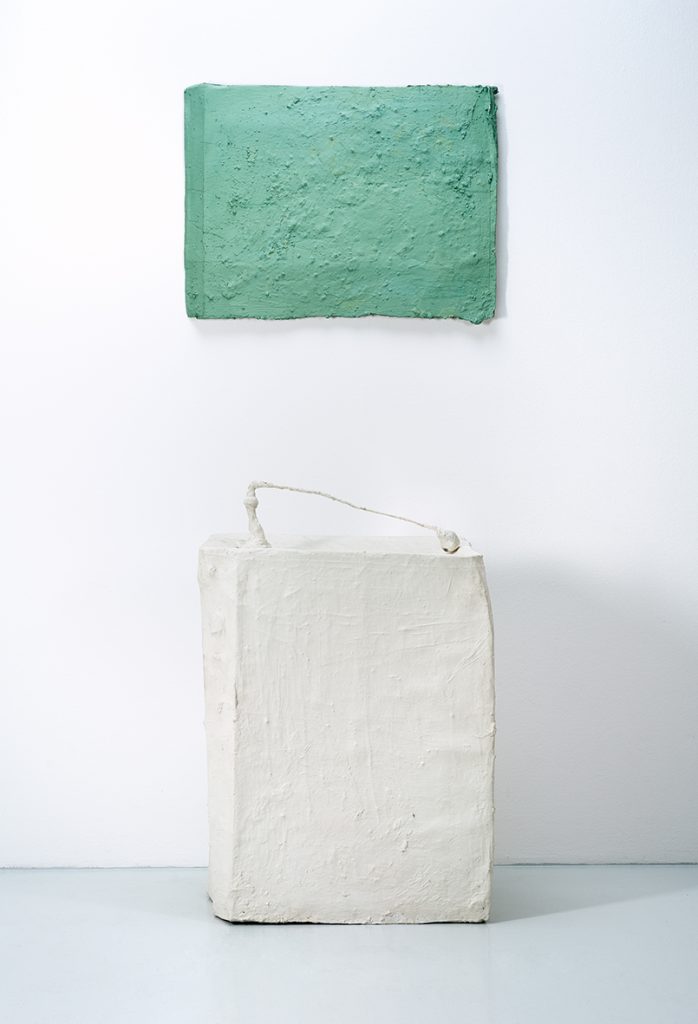
price realised € 253,000
FITTING NOT-FITTING
This applies to West’s works in general, but it’s especially true for his signature Passstücke, or fitting pieces: they’re meant to be touched. According to West’s vision, viewers are not just allowed, but sometimes explicitly encouraged to interact with them during exhibitions. An example: “Hang a Passstück around your neck and make yourself a part of the scene.” The strict boundary between art and its audience is dissolved. Art is meant to be used. The Passstücke double as prosthetic extensions of the human body, complete with clever names like Maulschelle (box on the ear), Tuttlschupfer (boob shover), or Schnorrhut (blag hat). “I would assert that if neuroses could be made visible, they might look like this”, the artist explained in an interview with Wiener magazine back in June 1980.
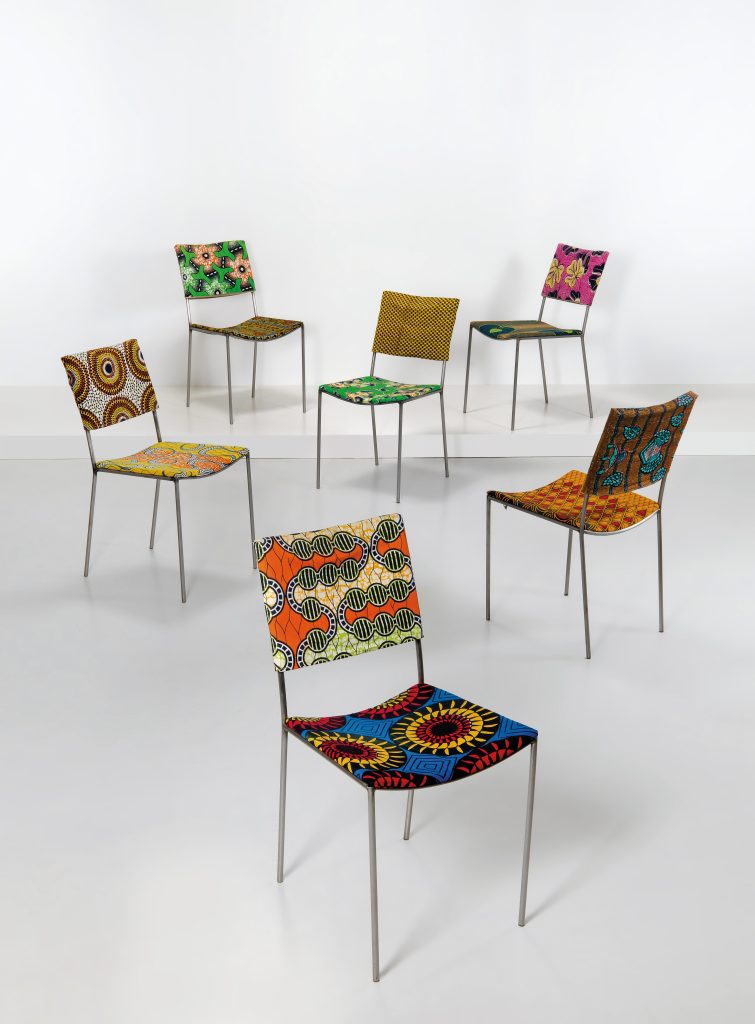
FRANZ WEST AND DAVID ZWIRNER NEW YORK
price realised €106,250
UNSETTLING
Franz West’s art “unseats” convention – among other things, with seating. In the late 1980s, he began conceptualising seating furniture to explore the boundaries between art object and utility item. Furniture as art objects or art objects as furniture: the artist’s intention here was evidently to complete his work through their use.
West was convinced that art never has just one, let alone an absolute, meaning. Its interpretation should be changeable, depending on the context in which it is shown and the reaction of the viewer. His work marks the start of a dialogue. In the truest sense of the word, Franz West’s works unsettle the mind while settling – that is, coming into intimate contact with – the body.
West was convinced that art never has just one, let alone an absolute, meaning. Its interpretation should be changeable, depending on the context in which it is shown and the reaction of the viewer. His work marks the start of a dialogue. In the truest sense of the word, Franz West’s works unsettle the mind while settling – that is, coming into intimate contact with – the body.
AUCTION
Contemporary Art, 29 and 30 November 2023, 6pm
Palais Dorotheum, Dorotheergasse 17, 1010 Vienna
+43-1-515 60-358, 386, 765


